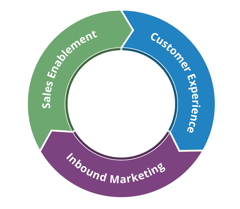 You’ve probably heard (or read) a great deal in recent years about the importance of video content in the marketing world. Indeed, stats suggest that it’s much more eye-catching than other content forms, making pages “stickier”, humanizing brands, and offering an easy route into valuable channels like YouTube, Facebook, Instagram, and other social media platforms.
You’ve probably heard (or read) a great deal in recent years about the importance of video content in the marketing world. Indeed, stats suggest that it’s much more eye-catching than other content forms, making pages “stickier”, humanizing brands, and offering an easy route into valuable channels like YouTube, Facebook, Instagram, and other social media platforms.
But knowing that is of little use to you if you don’t understand how to make video content. Simply pointing a video camera or smartphone at nothing in particular and hitting record will get you precisely nowhere, and doing basic pans of your office will fare only marginally better.
If you’re going to use video content at all, it needs to be great. And that might sound very daunting, but it doesn't need to be. Not only should you think of it as a fresh challenge to be enjoyed, but you should take into account the very real possibility that you can turn your best non-video content into similarly-strong videos.
How do you go about doing that? Well, that’s what we’re going to look at in this article. To be specific, we’re going to review 7 ways in which you can turn great content into great videos.
1. Create a slideshow story from stills: Any business that has been in operation for some time is going to accrue photos, whether through dedicated photoshoots, general snapping around the workplace, or the ill-advised chicanery of team events. In isolation, they’re great for social media sharing, but when you gather them up down the line, you can turn them into excellent videos.
By putting your images into a timeline following something in particular, you can create a nice slideshow that will chart progress. If your team has grown over time, for instance, you could show the ramping-up of office activity. And you don’t really need to do much more than throw on some stock music for atmosphere, though having some kind of narration would be a decent bonus.
2. Record group commentary on an old piece: People like to get insight into the companies they work with or buy from, because it helps them understand what the staff are actually like and how they operate. Anyone can make a claim on a website about having particular values — it won’t be believed until there’s something meaningful to back it up. That’s why some company-wide commentary on an old piece of content can make for a really interesting video.
You don’t need to go into it with any particular agenda, so don’t plan to be solely positive or negative about the content you’ve chosen. More than anything, it’s a chance for you to show emotion: pride, humility, embarrassment, whatever comes up. Viewers will enjoy seeing you think back to the circumstances that gave rise to your own content, and the added context will make that content more interesting to them (like the director’s commentary for a
movie).
3. Accompany reviews with product footage: Reviews and roundups are staple blog fare for a reason: they rank well. People are always looking for informed opinions about which products and services are worth their time and money, and they’ll typically browse numerous pieces to get a better overall impression, making it more likely for any one review to get some attention.
If you have some old text reviews, you can turn them into videos very simply with an audio recording and some footage of the reviewed item being used. If it’s a review of a hat, you can show someone from your team wearing the hat around town. If it’s a review of a SaaS package, you can show someone in your office using it. You can then embed the video in your written review and share the video through sites like YouTube, increasing the review’s exposure.
4. Elaborate upon existing content: Sometimes you produce long-form content (an introduction to a topic, a guide to a specific system, etc.) that leaves some things out for brevity’s sake, and in other instances you’ll find that a comprehensive guide you wrote several years back has fallen out of date somewhat because you’ve been unable to find the time to write the necessary updates.
Because it’s often a lot faster and more useful to explain something through a video clip, you can add to your old content in bitesize chunks, each one covering a specific feature or point. How you present those clips will be up to you — you could just record yourself talking, or use illustrative slides, or even draw on a whiteboard — but you can then pepper them throughout your old content to freshen it up. And for a bonus, you can line them up, add some new introductions, and make them into handy topic-based video playlists.
5. Animate an infographic: Infographics are tremendously powerful for gathering shares, because they combine text and imagery in a format that is much easier to follow than standard content and much more impactful (particularly when the information is structured in a creative way). If you’ve spent time in the past working on sophisticated infographics with high-quality resources, there’s no reason you can’t rework them into animated videos.
In its most basic form, such a video could consist of slow pans across the content, pausing on the most important stats. Because infographics are often very large and not proportioned for social media (Instagram has set aspect ratios, for instance), using a 16:9 video frame to steadily pan across everything is a way to get around this limitation. And if you’re handy with a video editor, you could take an infographic’s resources and turn them into a fully-fledged animation.
6. Shoot a company introduction: Being popular with customers and winning their loyalty is about much more than providing the best products or the best services, because we
don’t rate our business experiences very practically. We go by how we feel about buying something or working with a certain brand. By recording a professional but relaxed introduction to your company (using the information from your website, particularly your About Us page), you can show that you’re personable.
Since it’s my primary field, let me use an example from the online e-commerce world: do you think online gadget stores are a rich investment for micro-entrepreneurs because their inventories are exclusive and top-class? No — their value lies in the scope of their presentation. The exactly same item positioned in two different ways can have vastly distinct perceived values. You’d be amazed by the positive impact a cheerful and passionate staff introduction to your company can have.
7. Deliver to-the-camera training: People always welcome free online resources, particularly instructional videos. Even if you’re just looking at someone talk, it’s easier to pay attention to a piece of training when you can see a human face, plus you can glean some additional subtleties from their face (everything from how they’re feeling to how genuine they’re being).
If you already have some guides and resources available through your blog, all this requires you to do is sit in front of a camera, look into the lens, and read them out (or read out condensed versions to cut down on time). Just imagine that you’re giving an in-person training stage, and focus strongly on how you want to come across, because that will matter just as much as the quality of the advice you’re giving. If you come across as an expert, people will be sold on your business, and you’ll see a significant bump in your enquiries.
If you're interested in discussing your current marketing strategy and how you can further align that with your brand and voice, we invite you to schedule an inbound marketing consultation with our team. You can also check out our marketing explainer videos if you have any questions specifically on video marketing.
Guest Blog Contributor: Kayleigh Alexandra is a content writer for MicroStartups — a site dedicated to spreading the word about startups and small businesses of all shapes and sizes. Visit their blog for the latest marketing insights from top experts and inspiring entrepreneurial stories. You can also follow them on Twitter @getmicrostarted.



.png?width=80&height=80&name=diamond-badge-color%20(1).png)
__Square.png?width=250&height=250&name=Marketing_Hub_(1)__Square.png)




.png?width=250&name=diamond-badge-color%20(1).png)
